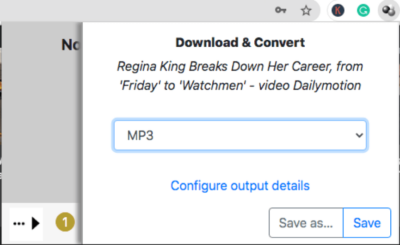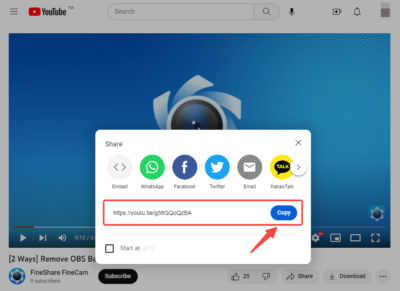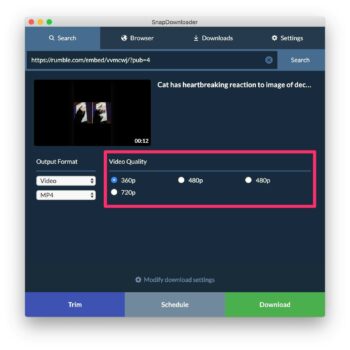I. Introduction
In today's digital age, the demand for high-quality images is soaring, creating exciting opportunities for photographers to monetize their work. Getty Images and Alamy are two prominent platforms that offer photographers a chance to sell their photos and reach a global audience. However, deciding between these platforms requires careful consideration of various factors to ensure the best fit for individual goals and creative aspirations.
This guide aims to help photographers make an informed choice between Getty Images and Alamy by providing an overview of each platform's strengths and weaknesses. We will explore the advantages and disadvantages of using both services, delve into key considerations when choosing a platform, and present real-world experiences from photographers who have navigated these digital marketplaces.
Also Read This: Quest for Sound: Getting Spotify on Your Quest 2
II. Getty Images

A. Overview of Getty Images
Getty Images is one of the most renowned and influential stock photography agencies in the world. Founded in 1995, it has built an impressive global presence, serving as a leading provider of visual content to media organizations, businesses, and creative professionals. Getty Images boasts an extensive library of high-quality images, videos, and music, making it a go-to destination for a wide range of clients seeking compelling visuals for their projects.
B. Advantages of using Getty Images:
1. Extensive Global Reach and Customer Base:
Getty Images vast distribution network spans numerous countries and continents. This wide-reaching presence allows photographers to tap into a massive customer base, increasing the potential for exposure and sales.
2. Established Reputation and Industry Credibility:
Over the years, Getty Images has established itself as a reputable and trustworthy platform in the stock photography industry. Partnering with Getty Images can enhance a photographer's professional standing and credibility within the field.
3. High-Quality Standards for Image Selection:
Getty Images maintains strict quality standards for the images it accepts. As a result, the platform is associated with top-notch, premium content, attracting clients who value excellence and uniqueness in their visuals.
4. Potential for Higher Licensing Fees and Royalties:
Getty Images is known for offering higher licensing fees and royalty rates compared to some other stock photography agencies. This means that photographers can potentially earn more per sale of their images.
C. Disadvantages of using Getty Images:
1. Stringent Submission and Acceptance Process:
Getty Images upholds a rigorous review process for submitted images. Not all images may be accepted, and photographers must meet stringent technical and aesthetic criteria to have their work approved.
2. Exclusive Content Requirements:
Getty Images often requires photographers to provide exclusive rights to the images they upload to the platform. This exclusivity may limit the photographer's ability to sell the same images elsewhere.
3. Lower Royalty Rates for Non-Exclusive Contributors:
While Getty Images offers higher royalty rates for exclusive content, non-exclusive contributors might receive lower compensation for their images.
Overall, Getty Images offers photographers a chance to reach a wide audience of potential buyers, gain industry recognition, and potentially earn higher revenues. However, the platform's strict standards and exclusivity requirements might not align with the preferences and business strategies of all photographers. In the following section, we will explore another significant player in the stock photography market: Alamy.
This video shows Getty Images vs Alamy:
Also Read This: What is Mixcloud Used for? Here is the Answer
III. Alamy

A. Overview of Alamy
Alamy is a well-established stock photography agency that takes a unique approach to the industry. Founded in 1999, the platform prides itself on being one of the world's largest repositories of imagery, catering to a diverse range of customers, including publishers, designers, and creative professionals. Alamy's mission is to provide a vast and varied collection of images, making it a valuable resource for clients seeking authentic and diverse visual content.
B. Advantages of using Alamy:
1. Non-Exclusive Submission Policy:
Unlike Getty Images, Alamy allows photographers to submit images to their platform without exclusivity requirements. Photographers can sell the same images on other platforms, providing more flexibility in their distribution strategy.
2. Broad Range of Image Content Accepted:
Alamy accepts a wide variety of images, including creative, editorial, and documentary-style photos. This inclusivity attracts clients seeking unique and unconventional visuals for their projects.
3. Higher Royalty Rates for Contributors:
Alamy offers competitive royalty rates for contributors, giving photographers the potential to earn a fair share of the revenue generated from their image sales.
4. Simpler Submission Process:
Alamy's submission process is relatively straightforward, making it more accessible for photographers to upload their work and start selling quickly.
C. Disadvantages of using Alamy:
1. Smaller Customer Base Compared to Getty Images:
While Alamy has a significant customer base, it may not match the sheer size and global reach of Getty Images. This could potentially impact exposure and sales opportunities for photographers.
2. Less Stringent Image Curation:
Alamy's acceptance criteria might be perceived as less stringent compared to Getty Images. While this inclusivity allows for a diverse collection, it may also lead to a perception of lower overall image quality among potential buyers.
3. Less Specialized in Niche Markets:
Getty Images often focuses on specific niche markets, which can be advantageous for photographers targeting those segments. In contrast, Alamy's broad approach may not provide the same level of targeting for specialized audiences.
Despite some limitations, Alamy offers photographers a platform that emphasizes creative freedom, a broader range of accepted content, and the ability to maintain non-exclusive distribution rights. For photographers seeking flexibility in how they sell their images and who prioritize creative diversity, Alamy may prove to be a compelling choice.
However, photographers should carefully weigh the advantages and disadvantages of both Getty Images and Alamy to determine which platform aligns best with their photography goals and objectives.
Also Read This: How to Cancel Adobe Stock Subscription: A Step-by-Step Guide
IV. Factors to Consider When Choosing a Platform
When deciding between Getty Images and Alamy, or any other platform for selling photos, photographers should carefully evaluate several key factors. Each factor plays a crucial role in determining which platform aligns best with their photography style, business objectives, and overall success. Here are the essential factors to consider:
A. Photographic Style and Niche:
1. Evaluate the type of photography you specialize in, such as landscape, portrait, travel, or editorial. Choose a platform that caters to your specific niche and has a customer base interested in that style.
B. Licensing and Royalties:
1. Compare the licensing options and royalty rates offered by both platforms. Determine which platform provides the most favorable compensation for your work.
C. Exclusive vs. Non-Exclusive Content:
1. Consider whether you are willing to grant exclusive rights to your images on a platform like Getty Images or prefer the flexibility of non-exclusive distribution on platforms like Alamy.
D. Image Curation and Quality:
1. Research the curation process of each platform to understand how they maintain image quality and ensure only the best content is available to customers.
E. Global Reach and Market Presence:
1. Assess the geographic reach and market penetration of each platform. Determine which platform can provide you with access to the most relevant and diverse customer base.
F. Submission Process and Requirements:
1. Compare the ease of the submission process, including technical specifications and time required for image approval.
2. Consider whether the platform's submission process aligns with your workflow and how much effort you are willing to invest in meeting their requirements.
G. Contributor Support and Communication:
1. Look into the level of support and communication provided by each platform. Consider whether they offer resources, tutorials, or assistance to help you maximize your sales potential.
H. Platform Policies and Terms:
1. Read and understand the terms and conditions of each platform, including licensing agreements, usage rights, and any exclusivity requirements.
I. Photographer Community and Feedback:
1. Seek out feedback from other photographers who have experience with both platforms. Engage with online communities and forums to gather insights into their experiences and success stories.
J. Payment and Payout Procedures:
1. Investigate the payment methods and frequency of payouts on each platform. Ensure they align with your financial needs and preferences.
K. Long-Term Business Goals:
1. Consider your long-term business objectives and how each platform fits into your overall strategy for building a successful photography career.
By thoroughly considering these factors, photographers can make an informed decision on which platform best suits their needs. Keep in mind that each platform offers unique advantages, and there is no one-size-fits-all solution. It may also be beneficial to test both platforms with a selection of your work and analyze the results to see which one performs better for your specific photography niche and style.
Getty images vs Alamy stock photo
— boyish prince (@kingclem69) August 31, 2020
Also Read This: Becoming an Adobe Stock Contributor: A Guide to Selling Your Images
V. Case Studies or Testimonials
To provide a deeper understanding of photographers' experiences with Getty Images and Alamy, let's explore some case studies and testimonials from real-world contributors who have used these platforms to sell their photos.
Case Study 1: Sarah - Getty Images Contributor
Sarah is a professional travel photographer who decided to join Getty Images to reach a broader audience for her stunning landscapes and cultural images. After a meticulous curation process, her images were accepted, and she soon started earning royalties. Getty Images' global reach exposed her work to a vast clientele, including major publications and commercial brands.
However, Sarah found it challenging to meet the platform's exclusivity requirements, as she also wanted to sell her images on her personal website. Despite this, Getty Images remained a valuable platform for her most exceptional shots, and she continued to contribute exclusive content to benefit from higher royalty rates.
Testimonial 1: John - Alamy Contributor
"I've been selling my photos on Alamy for several years now, and it's been a great experience. I appreciate the freedom to submit non-exclusive content, as it allows me to diversify my revenue streams by selling my images on other platforms as well. Alamy's straightforward submission process saves time and effort, which means I can focus more on capturing amazing shots. The competitive royalty rates have been a major selling point for me, and I've been able to earn a steady income from my photography passion."
Case Study 2: Mark - Getty Images and Alamy Contributor
Mark is a versatile photographer who wanted to explore different platforms to maximize his earnings. He decided to submit some of his images to both Getty Images and Alamy. While Getty Images brought him higher licensing fees and global exposure, he found that Alamy's non-exclusive policy allowed him to sell the same images elsewhere, which helped him reach a wider audience. Mark strategically selected images for each platform based on their exclusive or non-exclusive requirements, optimizing his revenue potential across both platforms.
Testimonial 2: Emily - Getty Images Exclusive Contributor
"As a fine art photographer, I chose to go exclusive with Getty Images to maintain control over how my images are used and ensure they remain exclusive to this high-profile platform. The stringent curation process can be challenging, but it also ensures that my work is showcased alongside other top-tier photographers. Getty Images' customer base has exposed my art to buyers I wouldn't have reached otherwise, and the higher licensing fees have made it a worthwhile investment for my career."
These case studies and testimonials illustrate how photographers' choices regarding Getty Images and Alamy can be influenced by factors such as photography style, exclusivity preferences, revenue goals, and individual business strategies. Each platform offers distinct benefits, and the success stories vary based on photographers' unique approaches and goals.
Analyzing these real-world experiences can provide valuable insights for other photographers seeking to make an informed decision about the right platform for selling their photos.
Also Read This: Try This Online Video Downloader for VK – A Practical and Fast Solution for Saving VK Videos
VI. FAQ
Q1. What is the main difference between Getty Images and Alamy?
Getty Images is a leading stock photography agency known for its global reach, strict image curation, and potential for higher licensing fees. It often requires photographers to provide exclusive content. On the other hand, Alamy offers a more inclusive approach, accepting a broader range of images and allowing non-exclusive submissions, providing photographers with more flexibility in their distribution strategy.
Q2. How do the royalty rates compare between Getty Images and Alamy?
Getty Images typically offers higher royalty rates for exclusive contributors, whereas Alamy offers competitive rates for all contributors, regardless of exclusivity. The choice between platforms may depend on whether photographers are willing to grant exclusivity for potentially higher royalties or prefer non-exclusive rights with more diverse distribution options.
Q3. Can I submit the same images to both Getty Images and Alamy?
Yes, it is possible to submit the same images to both platforms. However, keep in mind that Getty Images may require exclusive rights to the images you upload, while Alamy allows non-exclusive submissions. Strategically selecting images for each platform based on their exclusivity requirements can help optimize your revenue potential.
Q4. Which platform is better for a specific niche, like travel photography or fine art?
The suitability of each platform for a particular niche may vary. Getty Images' niche-focused approach may make it more attractive for specific markets, whereas Alamy's inclusivity could appeal to a broader range of clients. Research the customer base and image acceptance criteria of each platform to determine which aligns best with your niche and photography style.
Q5. What are the key factors to consider when choosing a platform?
Key factors to consider include your photographic style and niche, the licensing and royalty rates, exclusive vs. non-exclusive content preferences, global reach and market presence, image curation standards, ease of the submission process, contributor support, platform policies, and your long-term business goals.
VII. Conclusion
Choosing the right platform for selling photos is a crucial decision that can significantly impact a photographer's success and revenue potential. Getty Images and Alamy stand as prominent players in the stock photography industry, each offering distinct advantages and considerations.
Getty Images excels in its global reach, industry reputation, and potential for higher licensing fees. Its exclusive content requirements may appeal to photographers seeking a premium marketplace for their most exceptional work. On the other hand, Alamy's non-exclusive approach provides creative freedom and the ability to distribute images across multiple platforms. It also boasts competitive royalty rates and a straightforward submission process.














